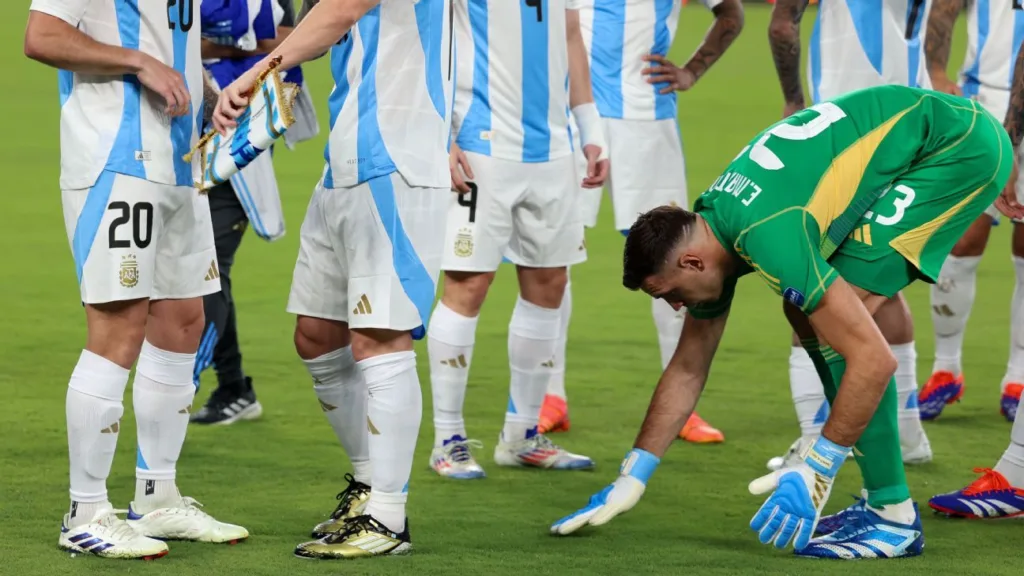Football News Update
The 2024 Copa América football tournament commenced on June 20, with reigning FIFA World Cup champions Argentina securing a 2-0 victory over Canada in front of 70,524 fans at the Mercedes-Benz Stadium in Atlanta. However, the post-match discussion centered around player frustrations over the playing conditions of the field provided by CONMEBOL.
With the 2026 FIFA World Cup, co-hosted by the United States, Canada, and Mexico, set to utilize many of the same venues, the ongoing concerns over pitch quality and the challenges of using NFL stadiums for soccer have come to the forefront. Some stadiums featured natural grass, while others had artificial turf with temporary grass laid on top, leading to uneven playing surfaces that drew criticism from various players and managers.
“Argentina manager Lionel Scaloni questioned why CONMEBOL waited until 48 hours before the match to prepare the field, while goalkeeper Emiliano Martínez described the pitch as ‘very bumpy’ and unsuitable for top-level players.”
Similar concerns were voiced by other prominent figures, including Weston McKennie of the United States, Peru manager Jorge Fossati, and stars such as Vinícius Júnior, Kamal Miller, James Rodríguez, and Ricardo Gareca.
CONMEBOL’s director of competitions, Frederico Nantes, explained that the choice of venues, including a combination of NFL, MLS, and multi-purpose stadiums, was based on factors such as size, travel distance, and infrastructure, with artificial turf being unavoidable despite player concerns. The federation aimed to standardize field conditions by requiring a 100m x 64m pitch and 25mm grass density, but the installation process and varying base surfaces led to different playing experiences for the teams.
As the 2024 Copa América progresses, there are ongoing discussions about the state of the pitches and the potential impact on the quality of play. With several of the Copa América venues also set to host the 2026 FIFA World Cup, FIFA is implementing a different approach to ensure greater consistency in playing conditions, including the use of hybrid pitches with a combination of natural and artificial grass.
The challenges faced during the 2024 Copa América highlight the ongoing efforts to provide top-level football players with consistent and high-quality playing surfaces, especially when utilizing stadiums primarily designed for other sports. As the global football community looks ahead to the 2026 FIFA World Cup, there is hope that the lessons learned from the Copa América will lead to improved field conditions and a more positive playing experience for the world’s best teams and players.
🔗 Source
